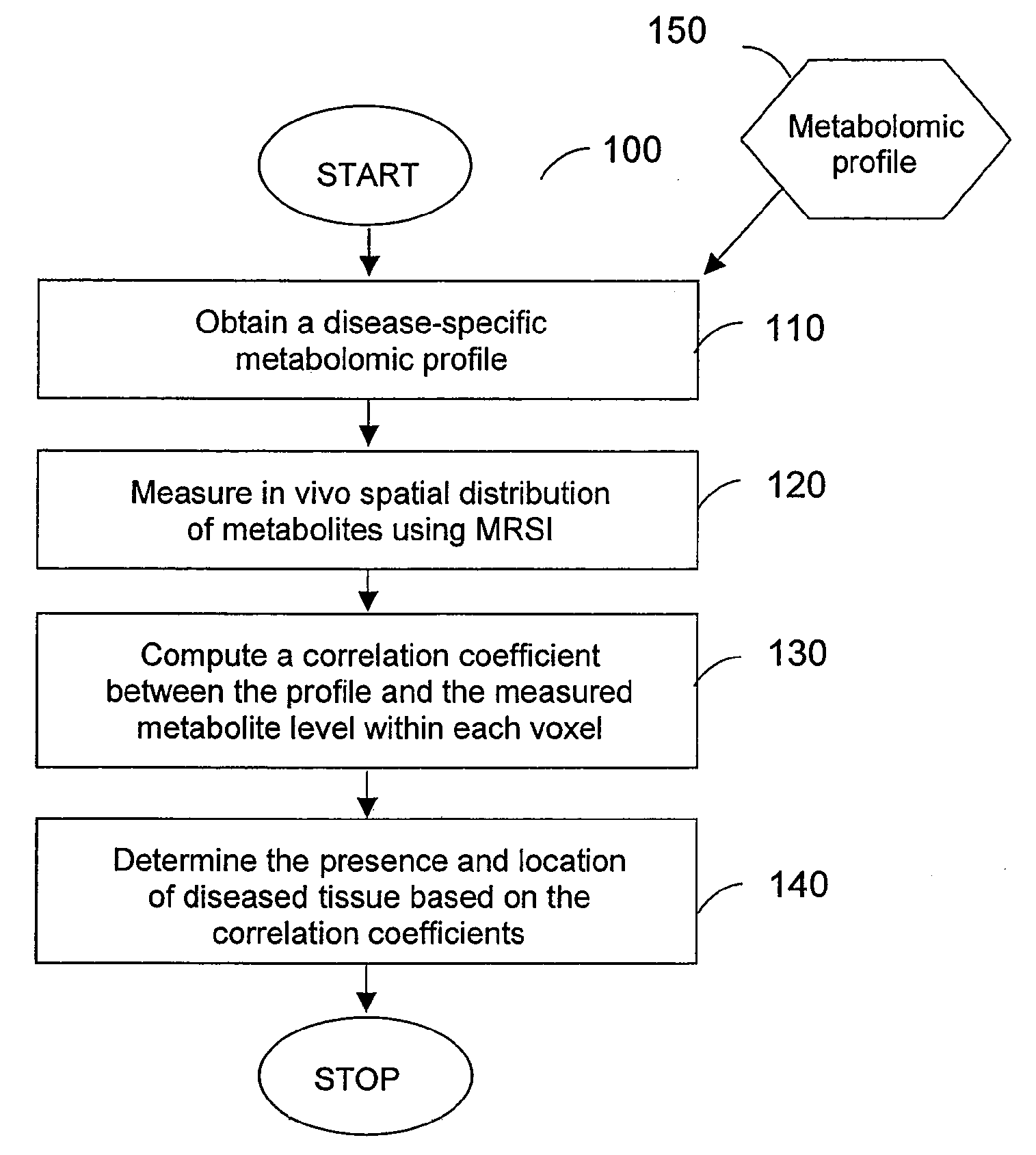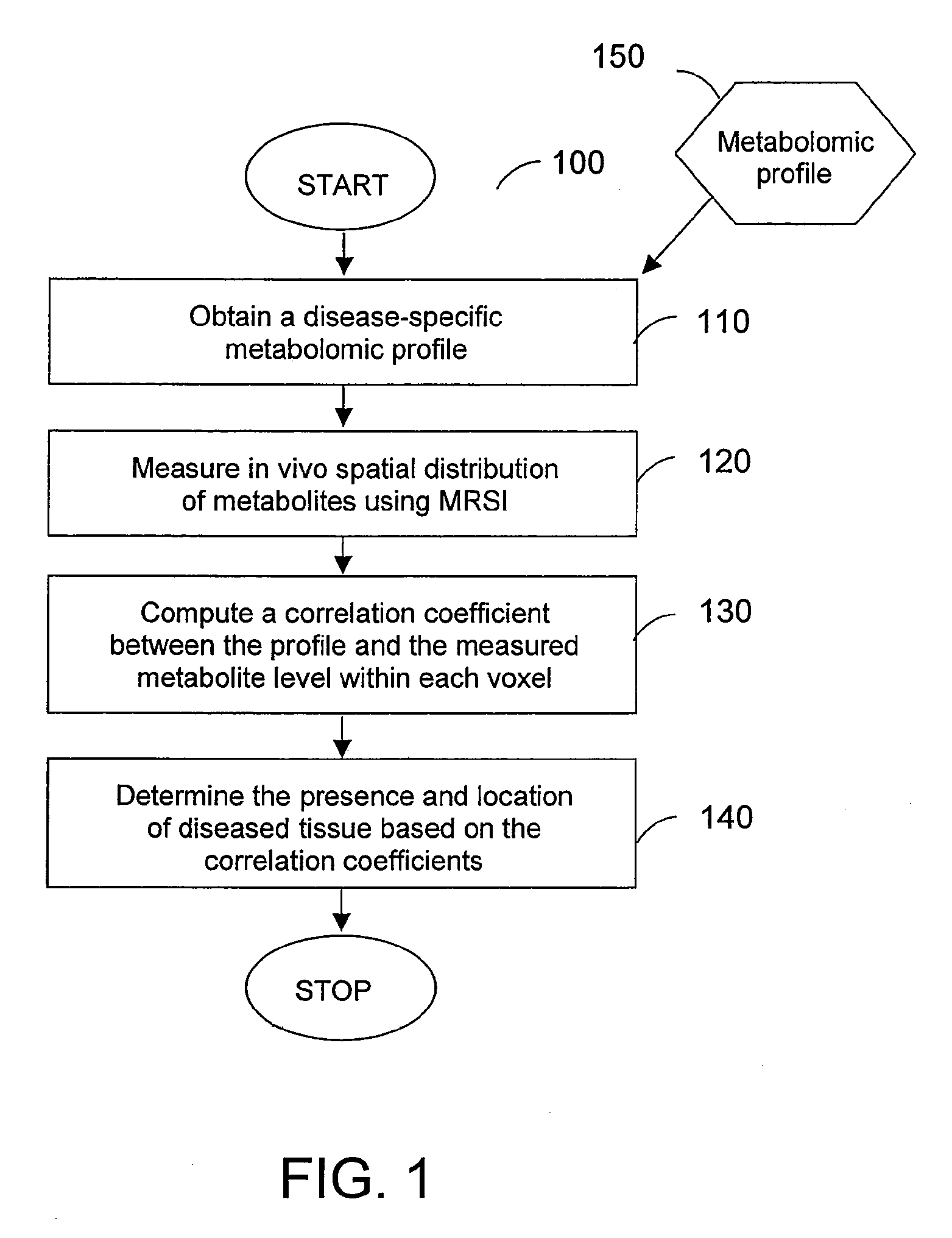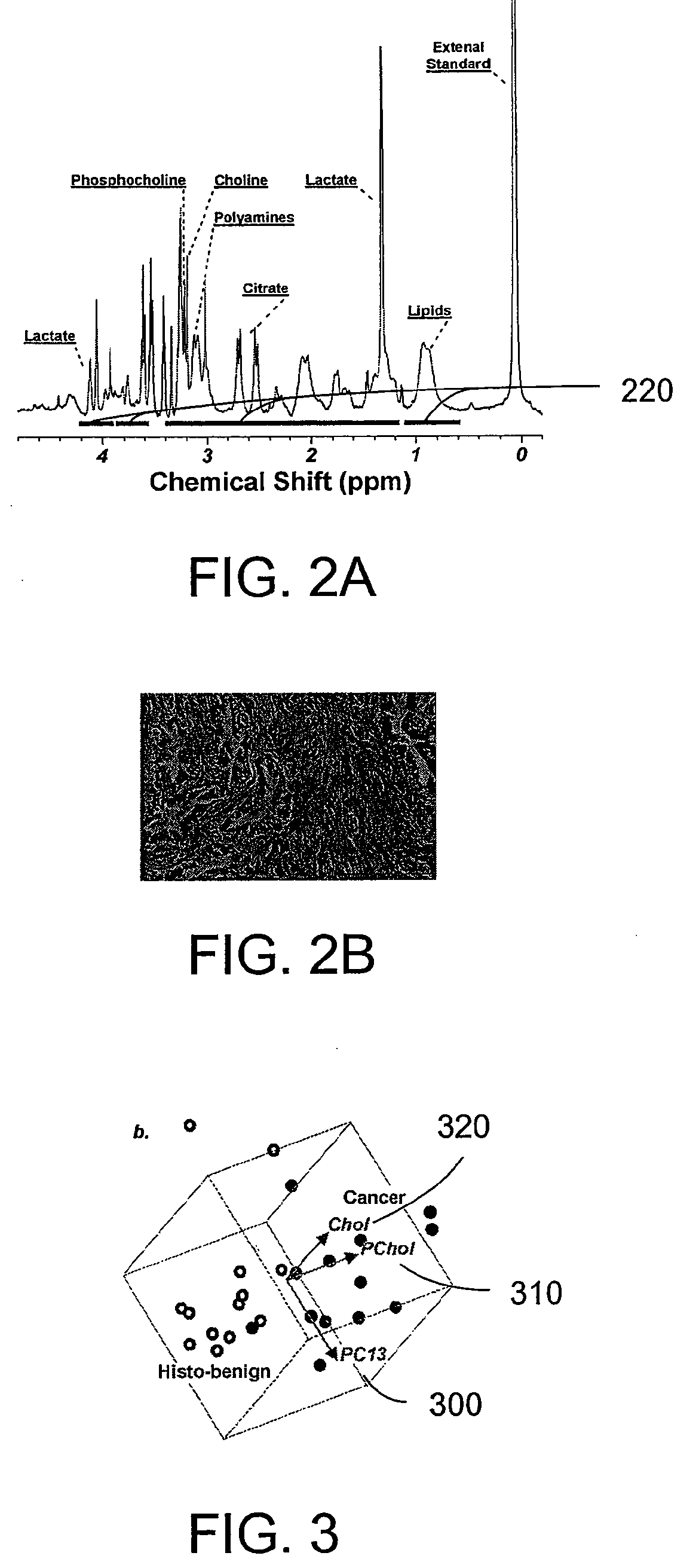System, method and software arrangement for analyzing and correlating molecular profiles associated with anatomical structures
a molecular profile and molecular structure technology, applied in the field of system, method and software arrangement for analyzing and correlating molecular profiles associated with anatomical structures, can solve the problems of adverse effects of overtreatment, inability to reliably direct appropriate treatment, and significant incidence of ‘indolent’ cancers, so as to improve the overall accuracy of disease identification and improve the diagnosis
- Summary
- Abstract
- Description
- Claims
- Application Information
AI Technical Summary
Benefits of technology
Problems solved by technology
Method used
Image
Examples
example
[0050]As an example, an investigation was performed to assess the sensitivity of local prostate metabolites in predicting prostate cancer status using the system, method and software arrangement according to exemplary embodiments of the present invention. 199 prostate tissue samples were obtained from 82 prostate cancer patients after prostatectomy. Prostate metabolite profiles were measured with intact tissue high-resolution magic angle spinning (HRMAS) proton MRS at 14. IT, and further analyzed with quantitative pathology.
[0051]Prostate metabolite profiles obtained from principle component analysis (PCA) of tissue spectra were correlated with pathology quantities and with patient serum PSA levels using a linear regression analysis. These correlations were evaluated against the pathological status of each patient using statistical analysis of variance (ANOVA).
[0052]Paired-t-tests indicated that tissue metabolite profiles can differentiate malignant from benign samples obtained from...
PUM
 Login to View More
Login to View More Abstract
Description
Claims
Application Information
 Login to View More
Login to View More - R&D
- Intellectual Property
- Life Sciences
- Materials
- Tech Scout
- Unparalleled Data Quality
- Higher Quality Content
- 60% Fewer Hallucinations
Browse by: Latest US Patents, China's latest patents, Technical Efficacy Thesaurus, Application Domain, Technology Topic, Popular Technical Reports.
© 2025 PatSnap. All rights reserved.Legal|Privacy policy|Modern Slavery Act Transparency Statement|Sitemap|About US| Contact US: help@patsnap.com



